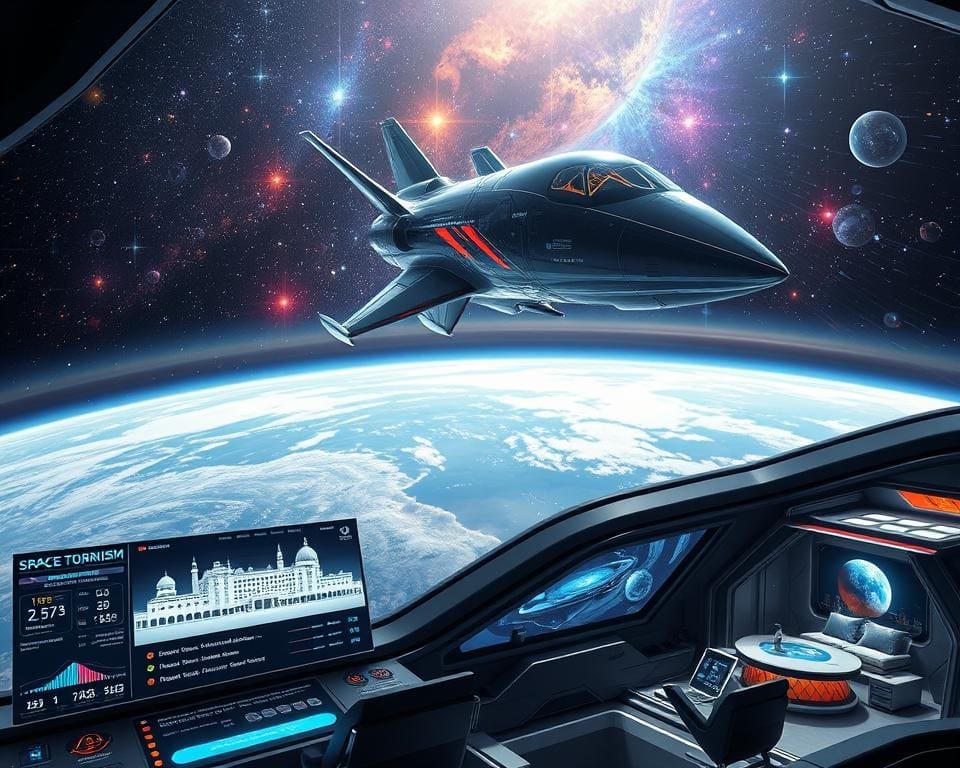The realm of space tourism is undergoing a remarkable transformation, propelled by groundbreaking technological innovations. With advancements in materials science, propulsion technologies, and data analytics, the vision of future space travel is becoming increasingly tangible. Companies such as SpaceX and Virgin Galactic are at the forefront of this revolution, turning the once-distant dream of commercial space travel into an achievable reality. These innovations not only promise more sustainable missions but also create thrilling opportunities for everyday citizens to engage in futuristic space experiences. As we stand on the threshold of this new era, the synergy of science and technology is set to redefine adventure tourism and expand humanity’s horizons beyond our planet.
Revolutionising Space Tourism through Innovative Technologies
The space tourism industry is undergoing a remarkable transformation driven by a select group of pioneering companies. These innovators are pushing the boundaries of rocket technology, showcasing how advancements can reshape travel beyond our planet.
Pioneering Companies Leading the Charge
Notable players such as SpaceX, Blue Origin, and Virgin Galactic are at the forefront of this revolution. Their commitment to innovative technologies has set new standards in the industry. With SpaceX’s Falcon 9 and Blue Origin’s New Shepard, the emphasis on reusability demonstrates a significant step towards making space travel more accessible and sustainable. These pioneering companies are not just competitors; they are collaborators in a mission to redefine the future of exploration.
Game-Changing Developments in Rocketry
Recent advancements in rocket technology are proving ground-breaking for the space tourism industry. Innovative designs such as vertical landing systems are enhancing efficiency and safety, allowing for reliable access to space. The collaborative efforts among these pioneering companies facilitate rapid advancements, resulting in reduced costs and improved safety measures. Such developments promise to make space travel a reality for many, transforming the dream of exploring the cosmos into a tangible experience.

The Future of Space Tourism: Technological Innovations
As the landscape of space tourism evolves, innovations in technology significantly enhance the experience for adventurers. The integration of virtual reality and augmented reality transforms both pre-flight anticipation and in-flight enjoyment, allowing customers to immerse themselves in simulations of space travel. This not only alleviates anxiety but also cultivates excitement about the prospect of actual future space travel.
Virtual Reality and Augmented Reality Experiences in Space
Virtual reality fosters engaging experiences that bring the wonders of space closer to potential tourists. By creating detailed environments and scenarios, these technologies provide glimpses of what awaits beyond Earth. This immersive engagement encourages individuals to consider space tourism, translating visions of distant galaxies into attainable adventures. Augmented reality applications also pave the way, blending the real and virtual worlds, thereby enriching the overall experience.
Improving Safety and Accessibility through Advanced Engineering
Ensuring safety in space tourism remains a critical focus. Advancements in materials science contribute to the creation of spacecraft that withstand extreme conditions. Rigorous testing protocols enhance safety measures, fostering greater confidence among potential travellers. Moreover, these technological innovations extend beyond safety; they aim to make space travel accessible to a broader demographic. As companies embrace inclusivity, they work tirelessly to welcome diverse populations into the realm of space exploration.
Cutting-Edge Space Technology: Shaping the Future of Travel
As the landscape of space tourism evolves, cutting-edge space technology is at the forefront of this transformation. One of the most significant innovations is the advent of reusable rockets, which are fundamentally altering the economics of affordable space travel. Pioneered by companies like SpaceX with their Falcon 9, these rockets can be refurbished and flown multiple times, drastically reducing the costs associated with launching payloads into orbit. This advancement not only represents a leap in engineering but also opens the door for greater participation in the burgeoning space tourism market, making it accessible to a wider audience.
Reusable Rockets and Their Impact on Cost
The financial implications of reusable rockets are profound. By significantly decreasing launch costs, companies can now offer competitive pricing for spaceflights. This shift not only makes trips to the edge of space more appealing to adventure-seekers but also enables new space-related enterprises to flourish, creating a vibrant ecosystem within the industry. With each flight, the technology is refined, promising even more savings and efficiencies in the future.
Commercial Spaceports: Expanding Horizons for Tourism
Alongside the innovation of reusable rockets, the establishment of commercial spaceports is revolutionising the infrastructure necessary for space tourism. Facilities like Spaceport America are paving the way for the suborbital flight experience, offering a launchpad for the next generation of space explorers. These emerging commercial spaceports not only facilitate affordable space travel but also enhance the overall experience, ensuring that a thrilling adventure awaits those eager to venture into the cosmos. With these developments, the future looks bright for space tourism, inviting more individuals to immerse themselves in the wonders of our universe.









